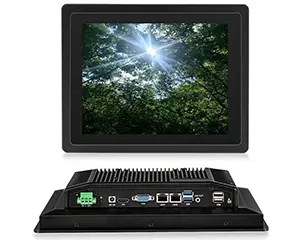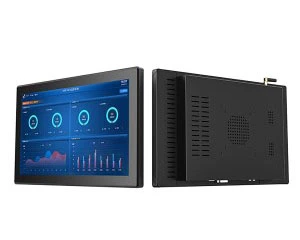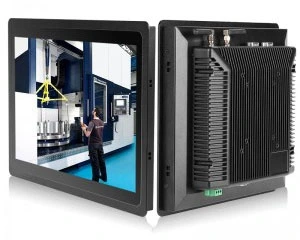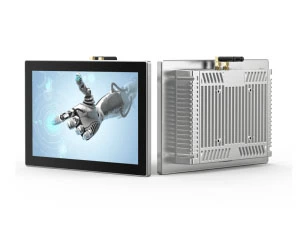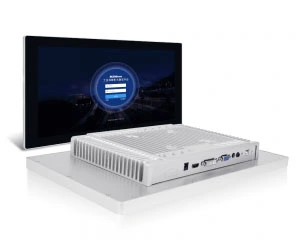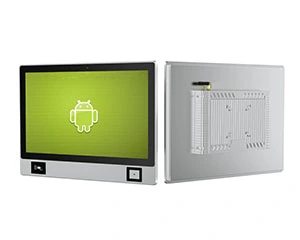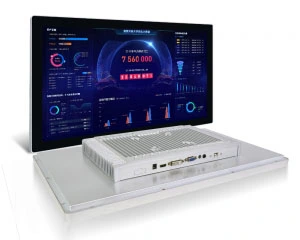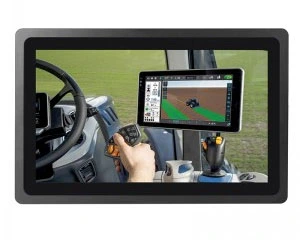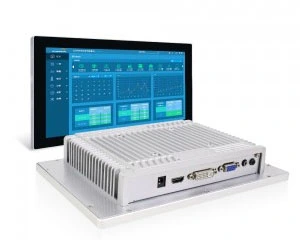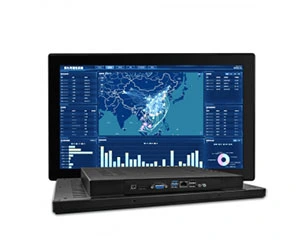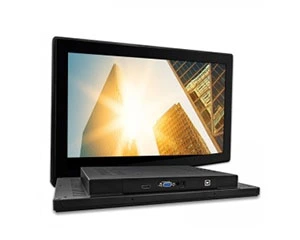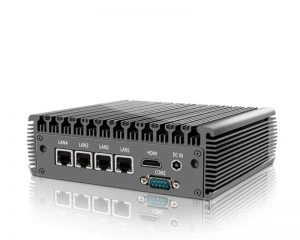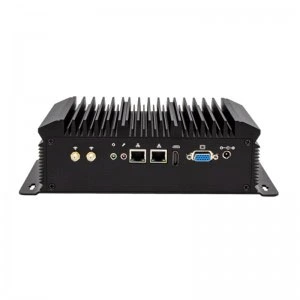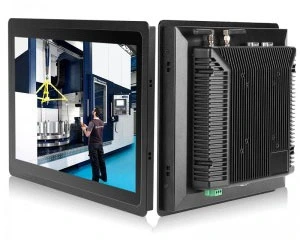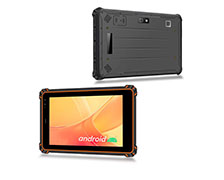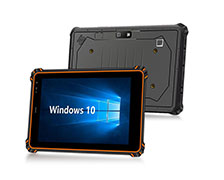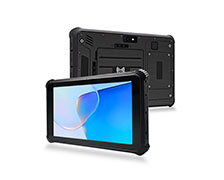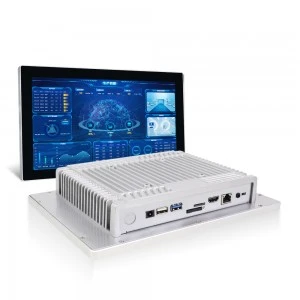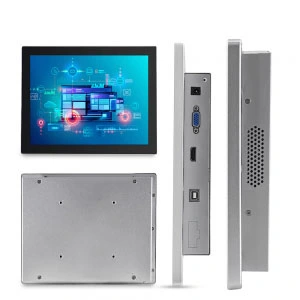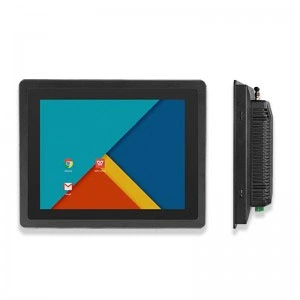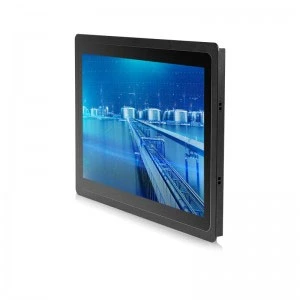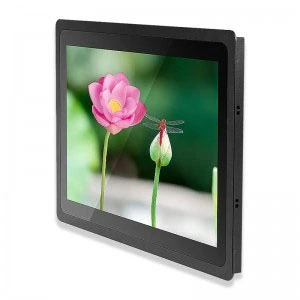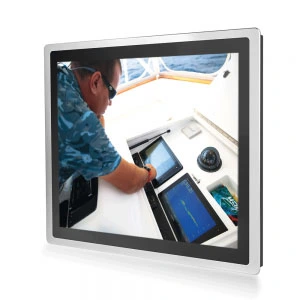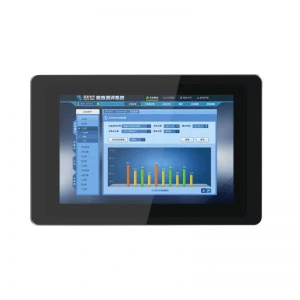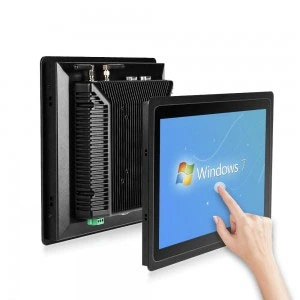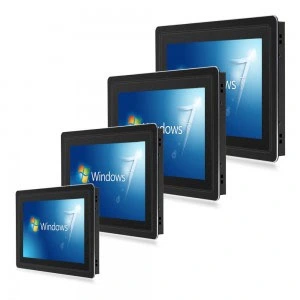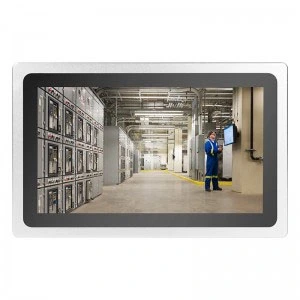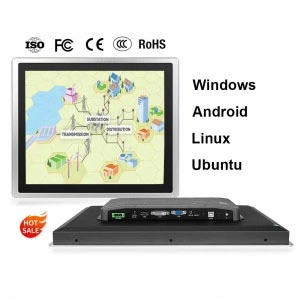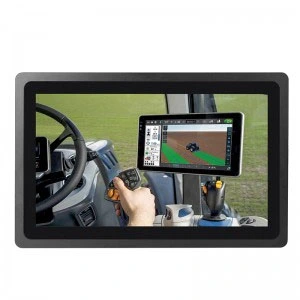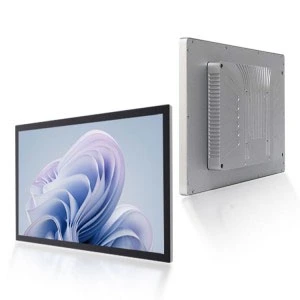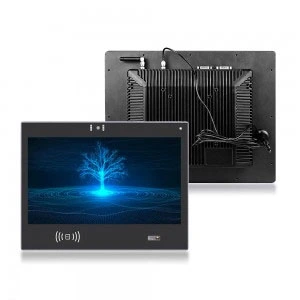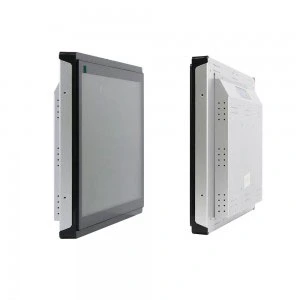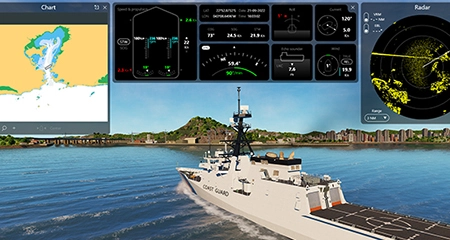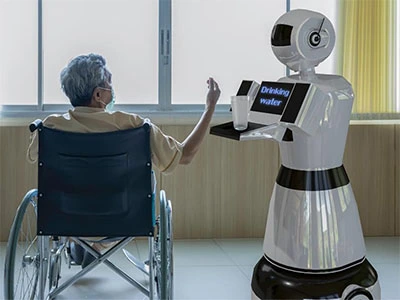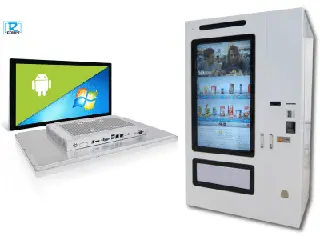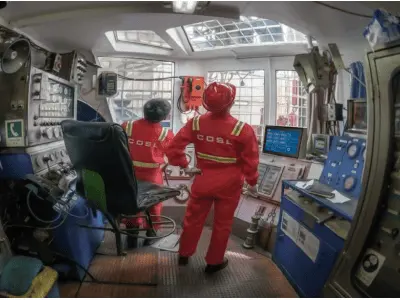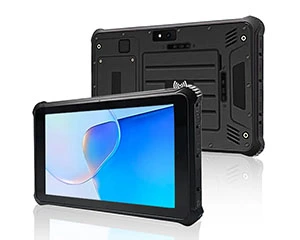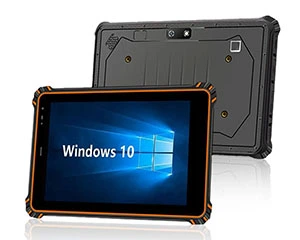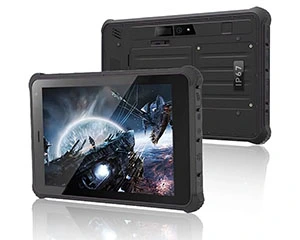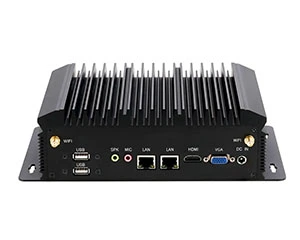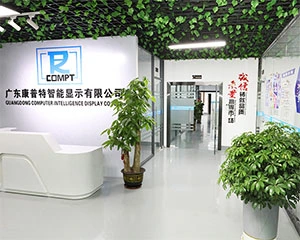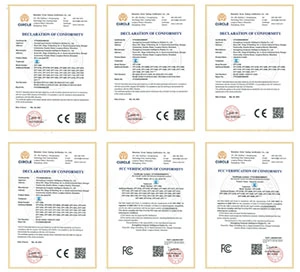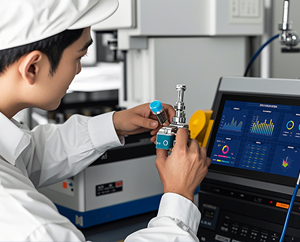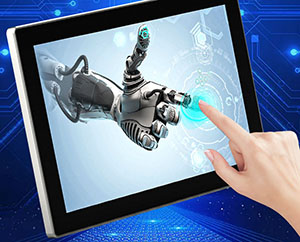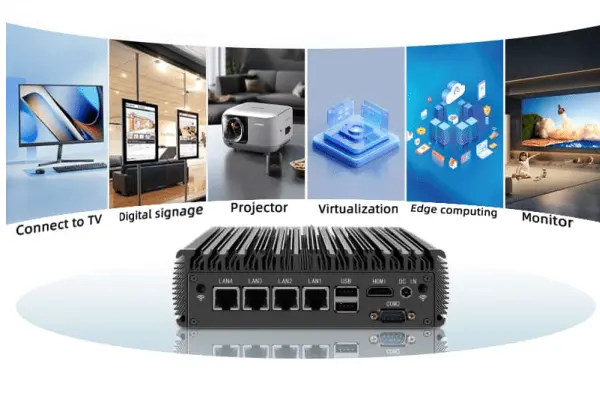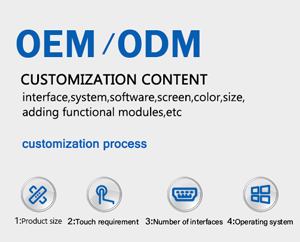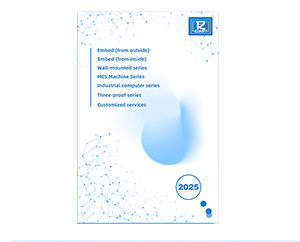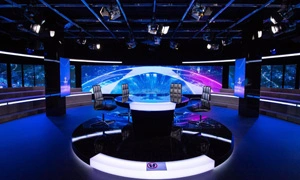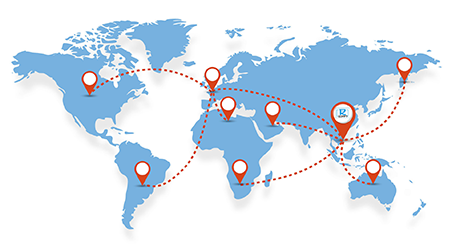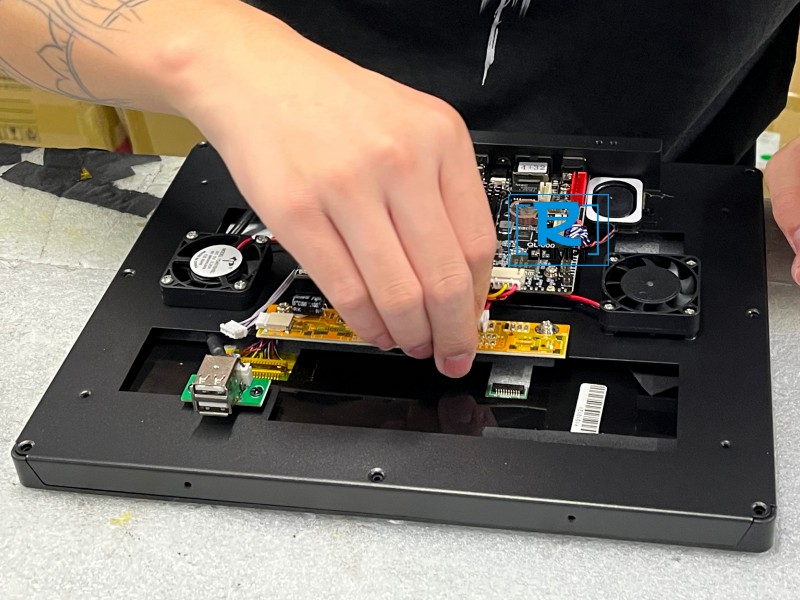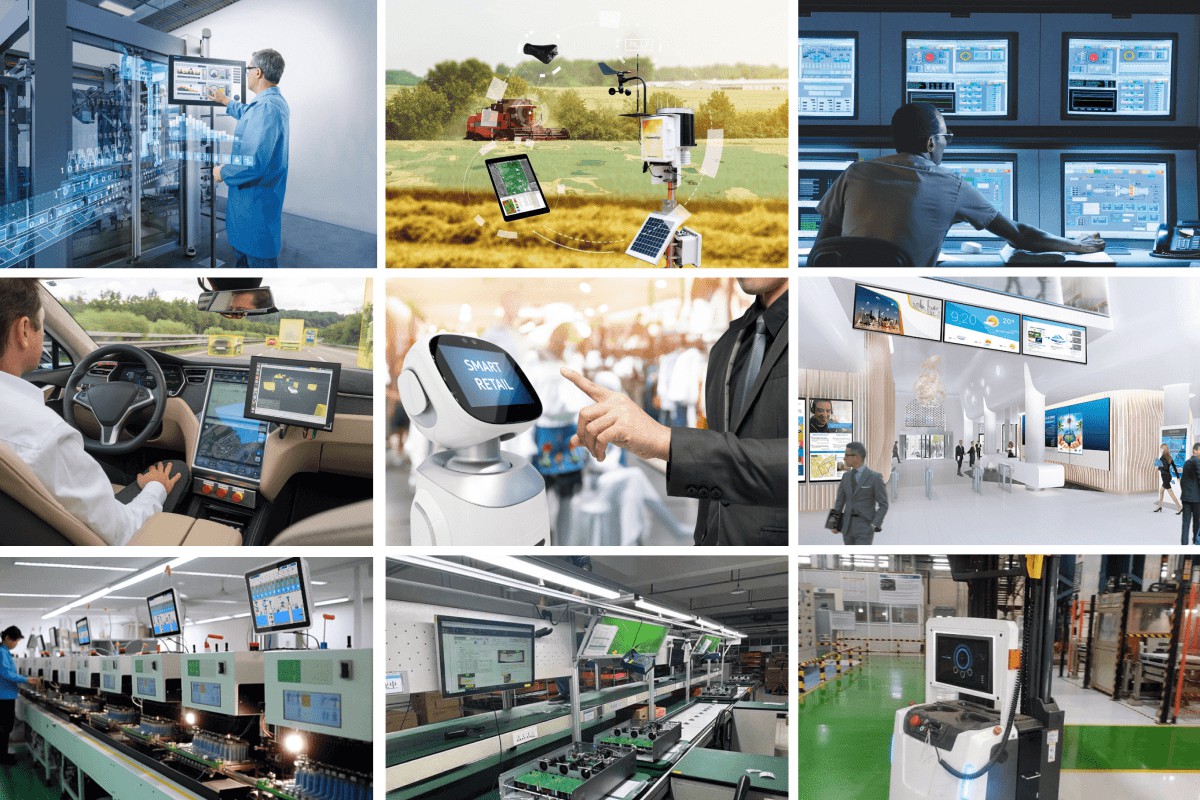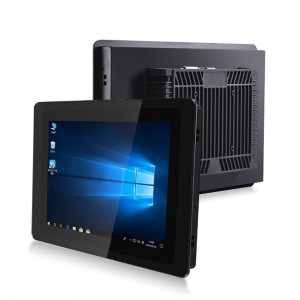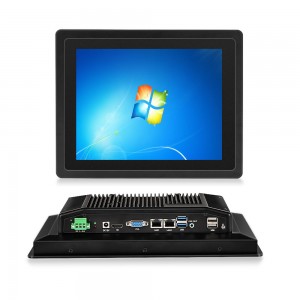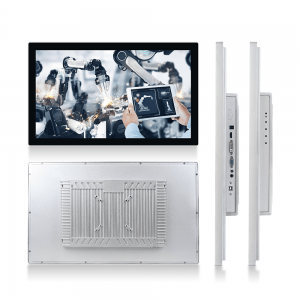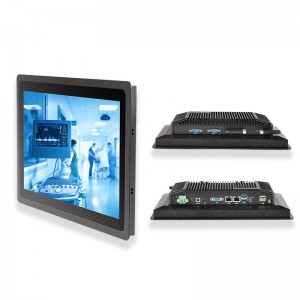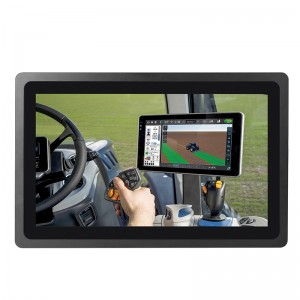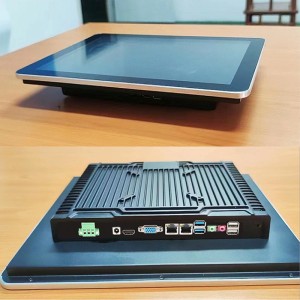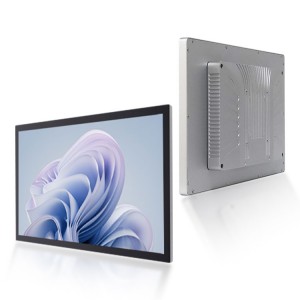Proper setup is crucial to ensure your industrial panel mount pc operates efficiently and has a long lifespan. A well-executed installation minimizes issues and ensures smooth performance. Preparation is key before you begin.
Start by organizing your workspace. Ensure it’s clean, well-lit, and free of clutter. Gather all the necessary tools and equipment beforehand to avoid interruptions during the process. Being well-prepared not only speeds up the work but also helps prevent errors.
Pre-Installation Preparation for Industrial Panel Mount Computer
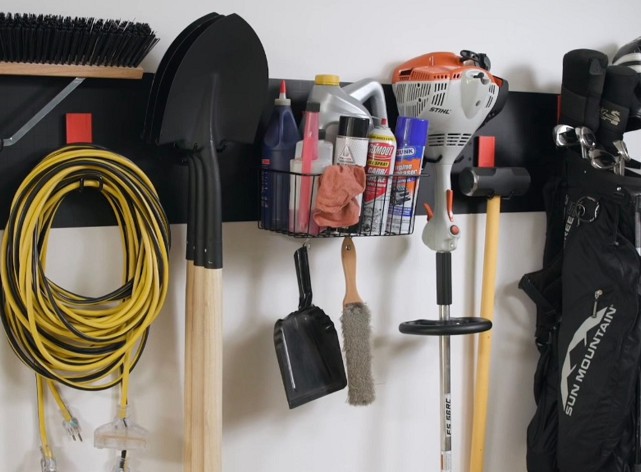
Gather Tools and Equipment
Before you start, collect all needed tools and items. This helps the process go smoothly without stopping. Look at the installation guide for your industrial panel mount pc to see what tools you need. Common tools include screwdrivers, brackets, and cable ties. A power drill might be needed if extra holes are required.
Keep your tools organized and easy to reach. Use a tray or organizer to hold them in place. Check that all tools work properly. For example, make sure screwdrivers fit well and are not damaged. Having the right tools ready saves time and avoids mistakes.
Prepare the Workspace
A tidy workspace is important for a good installation. Clear away anything you don’t need. Dust and dirt can cause problems and might harm your industrial panel mount pc. Use a damp cloth to clean surfaces and remove dust.
Make sure the area has good lighting. Bright light helps you see parts clearly and avoid errors. Set up near a power outlet if you can. This way, you won’t need long cords, which can cause tripping.
Safety is the most important step. Read the safety rules in the manual before starting. Wear gloves and safety glasses if needed. These protect you from sharp edges and injuries.
Turn off the power to the panel before working. This stops electrical shocks and keeps you safe. Use a voltage tester to check that the panel is off. Handle all parts carefully to avoid damage. Static electricity can harm parts, so use an anti-static wrist strap if possible.
Reminder: Keep drinks away from your workspace. Spills can ruin your equipment.
Verify Panel Compatibility
Before setting up your industrial panel mount pc, check if the panel works with it. This step makes sure the computer fits well and works properly.
First, look at your industrial panel mount pc specs. Check its size, mounting options, and connection needs. Compare these details with the panel you’ll use. If the panel’s size or features don’t match, you might need changes.
Tip: Use a ruler or tape to measure the panel. Correct measurements help avoid mistakes.
Read the manual that came with your industrial panel mount pc. These computers are made to fit different panels and work in tough places. The manual explains what to check and how to prepare your setup.
-
Panel mount computers fit into control panels for easy installation.
-
They have many connection types and mounting choices for better use.
-
Manuals stress checking your current equipment and system setup.
Look at the panel’s material and strength. Make sure it can hold the computer’s weight and handle shaking or tough conditions. Weak panels can cause problems later.
Check the panel’s wires and connections. Make sure the power and data cables match your industrial panel mount pc. If they don’t, you may need extra parts or adapters.
Note: Old wiring might need updates to work with the computer.
Finally, pick a good spot for the panel. Avoid places with too much heat, water, or dirt. These can harm the computer and shorten its life.
Taking time to check panel compatibility avoids delays and helps your industrial panel mount pc work well in its new spot.
Installation Process
Place your industrial panel mount pc in its assigned spot. Make sure the area is clean and free of dust. Use a ruler or tape to align the PC with the panel’s opening. Proper alignment helps it fit well and work correctly.
Check how the PC is positioned. Most are meant to stand upright, but check the manual for details. Keep the PC away from heat or areas that shake a lot. These can harm its performance and shorten its life.
Secure the PC to the Panel
After positioning the PC, attach it to the panel using the provided hardware. Most PCs come with brackets or clamps for this step. Follow these simple steps:
-
Attach the brackets to the PC if they aren’t already on.
-
Line up the brackets with the marks you made earlier.
-
Use screws or bolts to secure the PC. Tighten them evenly.
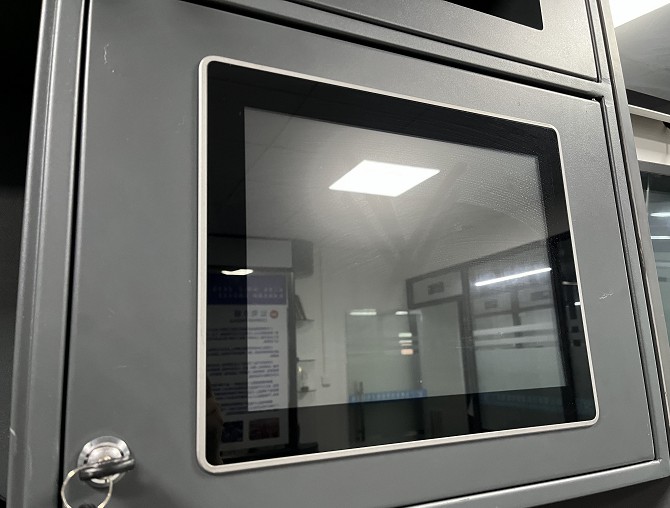
Make sure the PC is firmly attached, but don’t over-tighten. Too much force can damage the panel or hardware. Once secured, press lightly on the PC to check if it’s stable. If it moves, adjust the screws and alignment.
Connect Power and Data Cables
Now that the PC is mounted, connect the power and data cables. Find the correct ports on the back of the industrial panel mount pc. Check the manual if you’re unsure. Common connections include:
-
Power Cable: Plug it into the power port securely.
-
Ethernet Cable: Connect this for network access and data sharing.
-
USB Ports: Use these for devices like keyboards or storage drives.
Keep the cables neat to avoid tangling or accidental unplugging. Use ties or clips to hold them in place. Don’t let cables touch sharp edges or moving parts, as this can damage them.
Callout: Check the power supply voltage before plugging in the PC. Using the wrong voltage can harm the device.
When connecting cables, think about what your PC needs to work best. The table below shows important factors to consider:
|
Factor |
Details |
|---|---|
|
Processing power |
Helps the PC handle tasks efficiently. |
|
RAM |
Needed for running multiple programs smoothly. |
|
Storage |
Enough space is required for files and apps. |
|
Environmental protection rating |
Ensures the PC works in tough conditions. |
|
Shock, vibration |
Important for durability in rough environments. |
|
Connectivity |
Ethernet and USB 3.0 allow fast data transfer. |
|
Mounting options |
Flexible setups make installation easier. |
|
EMC and EMI |
Prevents interference with other devices. |
|
Certification |
Meets safety and industry standards. |
|
Operating temperature |
Works best in controlled temperature ranges. |
After connecting everything, turn on the PC to test it. If it doesn’t start or devices don’t work, check the connections again and fix any issues.
Configure the PC for Initial Use
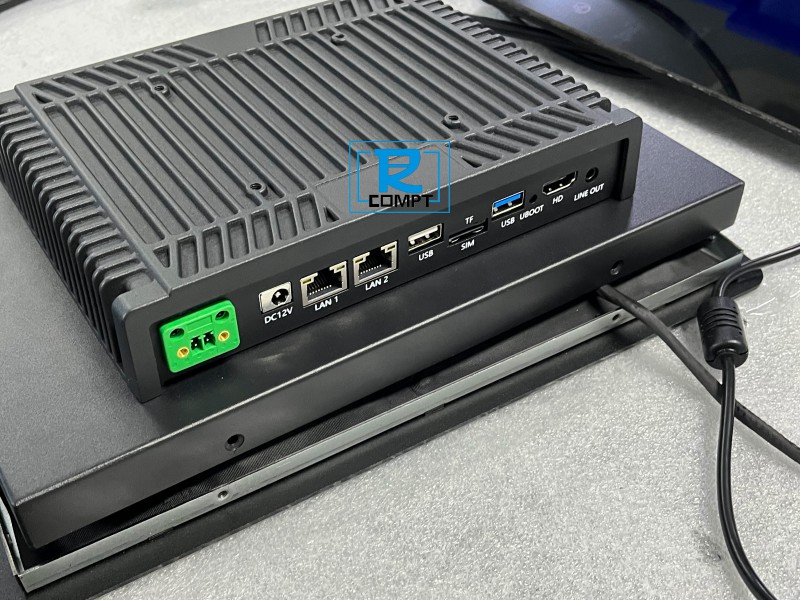
After your industrial panel mount pc is installed and connected, it’s time to set it up. This step ensures the system works properly and meets your needs. Follow these simple steps to get started:
1. Turn On the PC
Switch on the power to the panel and press the PC’s power button. Watch the startup to check for any errors. If it doesn’t start, check the power cables and voltage settings.
Tip: Keep the manual nearby. It can help solve startup problems.
2. Open BIOS/UEFI Settings
When the PC starts, press the key shown on the screen (like F2 or ESC) to open BIOS or UEFI. These settings control how the hardware works.
-
Make sure the PC detects all parts, like RAM and drives.
-
Change the boot order if you need to install an operating system.
Note: Don’t change settings you don’t understand. Wrong changes can cause problems.
3. Install an Operating System
If the PC doesn’t have an operating system, you’ll need to add one. Use a USB drive or DVD to install it. Follow the instructions on the screen. Pick an operating system that fits your industrial tasks.
-
Choose the right drive to avoid losing important files.
-
Set up language, time, and keyboard options during installation.
Callout: Many industrial PCs use systems like Windows IoT or special Linux versions.
4. Add Drivers and Updates
Once the operating system is ready, install drivers for the hardware. Drivers help the PC and its parts work together.
-
Use the disc that came with the PC or download drivers online.
-
Update the system to fix bugs and improve security.
Reminder: Restart the PC after adding drivers to make them work.
5. Set Up Network Connection
Connect the PC to a network for communication with other devices.
-
For wired setups, plug in the Ethernet cable and set the IP address.
-
For wireless, pick the Wi-Fi network and enter the password.
Test the connection by opening a website or pinging a server. A good connection is important for sharing data.
6. Install Industrial Software
Add the software needed for your industrial tasks. This could include tools for monitoring, control, or data analysis.
-
Follow the software’s setup instructions.
-
Adjust the settings to match your work needs.
Tip: Save a backup of your software settings. It helps if you need to reinstall later.
7. Test the System
Before using the PC fully, test it to ensure everything works.
-
Check the screen for clear images.
-
Test devices like touchscreens, keyboards, or mice.
-
Make sure connected tools, like cameras or sensors, work properly.
Write down any problems and fix them before starting regular use.
By following these steps, your industrial panel mount pc will be ready to perform well and meet your needs.
Post-Installation Checklist
Test Hardware and Connections
After setting up, check the hardware and connections to ensure they work. Start by looking at the physical parts. Make sure the industrial panel mount PC is firmly attached and doesn’t move. Gently press the edges to confirm it’s stable.
Next, inspect the cables. Check that the power cable is securely plugged in and data cables are in the right ports. Look for any loose or broken wires. If you see damaged cables, replace them right away to avoid problems or risks.
Turn on the PC and watch how it starts. Listen for strange sounds like clicking or buzzing, which might mean hardware issues. Test devices like the touchscreen, keyboard, or mouse to see if they work properly. If the PC connects to other tools, like cameras or sensors, make sure they function too.
Verify Software Functionality
Once the hardware is fine, check the software. Start with the operating system. Make sure it starts without errors and shows the home screen correctly. Open a few simple apps to see if they run smoothly.
If you installed industrial software, test its main features. For example, if it tracks equipment, check if it shows accurate data. Try running a few tasks to ensure the system works without delays.
Callout: Watch for error messages. Write them down or take screenshots to help fix issues later.
Check the network connection. Open a browser and load a webpage to confirm internet access. If the PC uses a local network, test file sharing or communication with other devices. A strong network is important for smooth operation.
Troubleshoot Installation Issues
If something doesn’t work during testing, don’t worry. Start by finding the problem. For hardware issues, check the connections again. Make sure all cables are secure and screws are tight. If the PC won’t turn on, check the power source or try another outlet.
For software problems, restart the PC. A simple reboot can often fix small glitches. If the issue continues, read the user manual or visit the manufacturer’s website for help. Many industrial PCs have tools to find and fix errors.
Reminder: Don’t make big changes without knowing the cause. Wrong adjustments can make things worse.
If you still can’t fix the problem, contact technical support. Give them details about the issue, like error codes or what’s not working. This helps them assist you better.
By following these steps, your industrial panel mount PC will be ready to work reliably and efficiently.
Maintenance Guide
Keep It Clean and Dust-Free
Cleaning your industrial panel mount PC helps it work well for a long time. Dust and dirt can build up on the outside and inside. This can make it overheat and work less efficiently. Cleaning often stops these problems and keeps it running smoothly.
Wipe the outside with a soft, clean cloth. Use a gentle cleaner that’s safe for electronics. Don’t use strong chemicals, as they can harm the surface. For tough spots, slightly wet the cloth and clean gently.
Check inside the PC sometimes. Dust inside can block airflow and cause overheating. If there’s a lot of dust, open the case and clean it carefully. Use a special anti-static brush to protect the parts.
Update Software Regularly
Updating software keeps your industrial panel mount PC safe and working well. Old software can cause problems and make the system less secure. Updates fix bugs and help the PC stay up-to-date with new technology.
Look for updates at least once a month. Start by checking the operating system for fixes. Install these updates quickly to improve security and performance. Then, update drivers for hardware. Drivers help the PC work with connected devices.
Callout: Some manufacturers offer tools to update automatically. Turn these on to make updates easier and avoid missing important ones.
Don’t forget to update any industrial software you use. These updates can add new features and make the software better. After updating, restart the PC to apply the changes.
Check Hardware Often
Checking hardware regularly helps find small problems before they get worse. This keeps the PC working well and lasting longer.
First, look at the mounting brackets and screws. Make sure they’re tight and secure. Loose parts can cause vibrations and damage over time. Next, check cables for damage. Replace any worn or broken cables to avoid connection problems.
Look at the screen for issues like dimming or flickering. If you see problems, contact the manufacturer for repairs. Test devices like touchscreens, keyboards, and mice to ensure they work properly.
Cleaning, updating software, and checking hardware are key to good maintenance. These steps help your industrial panel mount PC work well in tough conditions.
Watch Performance and Fix Problems
Watching how your industrial panel mount PC works helps it run well. Regular checks find problems early so you can fix them fast. Follow these steps to keep your PC in good shape.
1. Watch System Stats
Check important numbers to see how your PC is doing. Things like CPU use, memory, and disk activity show how hard it’s working.
-
Use tools like Task Manager to see live stats.
-
Try extra software for more details about your PC’s health.
Tip: Set alerts for unusual stats. For example, if CPU use hits 90%, check why right away.
2. Check Heat Levels
Too much heat can hurt your PC’s parts and make it last less time. Watch the temperature to keep it safe.
-
Use software to track how hot your PC gets.
-
Look at fans and vents to make sure they’re not blocked.
Callout: If it overheats, clean vents and check the processor’s thermal paste.
3. Test Connections
Good connections are key for industrial work. Test the network and devices to make sure they work well.
-
Ping the network to check for delays or lost data.
-
Make sure devices like cameras or sensors respond as they should.
Reminder: Replace broken cables or ports to fix connection problems.
4. Run Stress Tests
Stress tests show how your PC handles heavy work. This helps find weak spots in hardware or software.
-
Use tools to simulate tough tasks.
-
Watch how the PC performs during long, hard use.
Note: Stop testing if the PC overheats or acts unstable.
5. Solve Common Problems
Fix issues quickly to avoid bigger troubles. Here’s how to handle common ones:
-
Slow PC: Delete temp files and remove unused apps.
-
Crashes: Update drivers and check for software issues.
-
Broken Parts: Look for damage and replace bad components.
Tip: Write down problems and fixes. This helps track repeating issues.
6. Use Troubleshooting Tools
Tools can help find errors and suggest fixes.
|
Tool Type |
What It Does |
Example Software |
|---|---|---|
|
Hardware Tools |
Checks physical parts |
HWMonitor, MemTest86 |
|
Software Tools |
Finds bugs and compatibility issues |
Sysinternals Suite |
|
Network Tools |
Fixes connection problems |
Wireshark, PingPlotter |
Callout: Use these tools monthly to catch problems early and keep things running smoothly.
7. Plan Regular Reviews
Set up a schedule to check how your PC is performing. Regular reviews help you spot changes and plan upgrades.
-
Make a list to check stats, heat, and connections.
-
Compare today’s performance with past results to see trends.
Reminder: Share reports with your team so everyone stays updated.
By keeping an eye on performance and fixing problems fast, your industrial panel mount PC will stay reliable and efficient.
Advanced Tips for Industrial Panel Mount PC Setup
Optimize Mounting for Specific Applications
Mounting your industrial panel mount PC the right way helps it work well. Different jobs need different mounting methods. For example, in food factories, keep the PC safe from water and dirt. Use sealed cases to stop splashes and spills. In toy factories, place the PC where workers can reach it easily. This makes work faster and reduces delays.
Think about the PC’s size and weight when picking mounts. Heavy PCs need strong brackets, while small ones need lighter mounts. Always check if the panel is strong enough to hold the PC safely.
Real-life examples show why custom mounting is important. At a toy factory, workers liked easy-to-use mounts and screens. In meat factories, tough PCs helped improve work speed. These examples prove that good mounting boosts productivity in many industries.
Use Additional Accessories for Enhanced Functionality
Accessories make your industrial panel mount PC more useful. Add tools like barcode scanners or RFID readers to collect data faster. These are helpful in warehouses and inventory work. For better visibility, use anti-glare screens or covers. These protect the PC and make it easier to use.
Keep cables neat with clips or ties. This stops tangling and makes fixing things easier. If you need extra storage, use external drives. They give more space and faster access to files.
Callout: Pick accessories that match your PC’s ports and features. This avoids problems and ensures everything works well together.
ADLINK’s rugged industrial panel PCs are built for tough jobs. Adding the right accessories makes them even better for harsh environments.
Ensure Proper Grounding and Static Discharge
Grounding keeps your industrial panel mount PC safe from electrical shocks. Bad grounding can break parts and stop the PC from working. Use grounding wires or straps to connect the PC to a safe ground point. This stops electrical buildup and keeps it running safely.
Static electricity can damage parts, especially in dry places. Use anti-static mats or wrist straps when setting up or fixing the PC. These tools protect it from static damage.
Reminder: Read the manual for grounding rules. Follow these steps to avoid electrical problems.
In places with lots of electromagnetic interference (EMI), grounding is even more important. ADLINK’s flyer highlights EMI protection, ensuring the PC works well in tough conditions.
By mounting correctly, using helpful accessories, and grounding properly, your industrial panel mount PC will work efficiently and last longer.
Industrial Panel PC Long-Term Maintenance Strategies
Plan Regular Checks
Regular checks keep your industrial panel mount PC working well. They help find problems early and avoid costly repairs. Make a schedule based on where your PC is used. Dusty or busy areas may need more frequent checks.
Here’s an example schedule:
|
Task |
How Often |
|---|---|
|
Clean air filters |
|
|
Save PLC program backups |
Twice yearly |
|
Replace worn parts |
Every 8–9 months |
Regular care keeps your PC running smoothly and avoids sudden breakdowns. Change how often you check based on the workload and environment.
Change Old Parts
Replacing old parts helps your industrial panel mount PC last longer. Fans, cables, and connectors wear out over time. Check these parts during inspections and replace them when needed.
Focus on parts that affect performance the most. For example:
-
Change fans if they slow down or stop working well.
-
Replace broken cables to keep connections steady.
-
Upgrade storage drives if they’re full or showing errors.
Reminder: Keep extra parts ready for quick fixes. This saves time and keeps your PC running without delays.
Fixing worn parts quickly prevents bigger problems and keeps your PC working its best.
Control the Environment
Keeping the right environment helps your industrial panel mount PC last longer. Extreme heat, moisture, and dust can harm its parts and slow it down.
Industrial PCs like the G-Win Series are tough and built for hard jobs. They have strong cases, IP66 seals, and meet industry rules. These PCs work well in farming, food factories, and heavy industries.
Important environmental tips include:
-
Temperature: Keep the PC within its safe temperature range. Use heaters or coolers if needed.
-
Dust and Water: Place the PC in areas with IP65-rated covers to block dust and water.
-
Vibration: Use mounts that absorb shocks near heavy machines.
|
Feature |
What It Does |
|---|---|
|
Strong Build |
Handles shocks, water, and dust for tough environments. |
|
Protection Rating |
IP65-rated covers stop dust and water damage. |
|
Industry Standards |
Meets rules for reliable use in factories. |
|
Flexible Mounting |
Offers options for different setups. |
|
High Performance |
Fast processors for industrial tasks. |
Callout: Check the environment often and make changes as needed. This keeps your PC safe and working well.
By keeping the environment right, you protect your PC from harm and ensure it works reliably in tough places.
About COMPT’s Industrial Panel Mount PCs
Industrial Panel Mount PC Overview
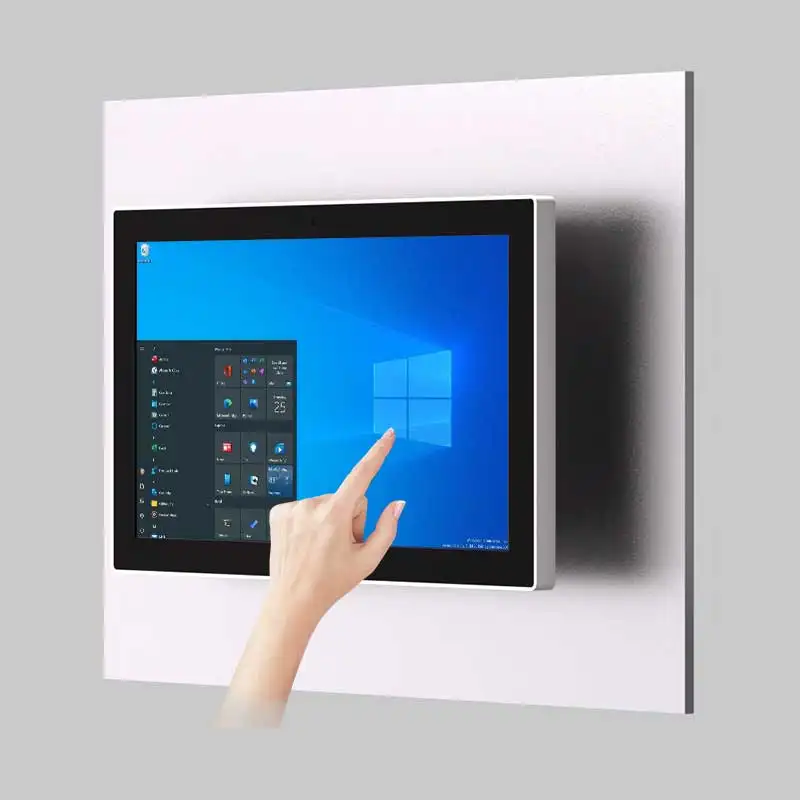
COMPT’s industrial panel mount PCs are built for tough work environments. They are strong, fast, and easy to use, making them dependable in hard conditions. Their simple design and small size fit well in industries like factories, food production, and shipping.
Here’s a table showing what makes COMPT’s panel PCs special:
|
Feature |
Description |
|---|---|
|
Design |
Sleek industrial look with a clean and simple style. |
|
Performance |
Reliable operation with low energy use. |
|
Waterproof |
Front panel meets IP65 standards to block water. |
|
Vibration Resistance |
Built to handle shaking, meeting GB2423 standards. |
|
Durability |
Sealed design keeps out dust for longer life. |
|
Material |
Strong aluminum alloy body for lasting use. |
|
Anti-Interference |
Protects against electromagnetic interference (EMI/EMC). |
|
Display |
High-definition screen for clear and bright images. |
|
Compact Design |
Tough case fits into many industrial spaces. |
|
Certifications |
ISO 9001 and ISO 14001 show high-quality standards. |
These features make COMPT’s panel PCs tough and dependable, even in rough places.
Solution
COMPT’s panel PCs are a smart choice for industries needing reliable computers. Their sturdy build and advanced features make setup and use simple, saving time and effort.
Benefits of COMPT’s solution include:
-
Software works on many types of hardware, saving money.
-
Broken HMIs are easy to replace since the software fits most panel PCs.
-
Development tools are included, so no extra downloads or licenses are needed.
These features make COMPT’s panel PCs perfect for industries that need flexible and efficient systems.
Advantages
COMPT’s panel PCs offer many benefits that improve their use and performance. They have a strong J1900 processor for fast computing and quiet operation. The tough cases, made from aluminum or stainless steel, protect the inside parts from damage, making them great for hard environments.
The touchscreen is easy to use, letting you control and check operations without needing extra devices. With a lifespan of over 50,000 hours, these PCs need less fixing and replacing, saving time and money.
|
Feature |
Description |
|---|---|
|
Processor |
Powerful J1900 processor for fast and quiet computing. |
|
Durability |
Handles heat, moisture, dust, and shaking for tough environments. |
|
Enclosure |
Strong aluminum or stainless steel case protects internal parts. |
|
Touchscreen Interface |
Easy-to-use touchscreen for control without extra devices. |
|
Service Life |
Lasts over 50,000 hours, reducing repairs and replacements. |
These advantages make COMPT’s panel PCs a great choice for industries needing strong and reliable computers.
Setting up and taking care of an industrial panel mount PC needs focus. You now know how to get your workspace ready, attach the PC, hook up cables, and set up the system for best performance. Cleaning often, updating software, and checking hardware keep it working well for a long time.
Reminder: Use this guide to help your PC work better and last longer.
Start now! Follow these steps to make installation easy and keep your PC running smoothly. Your hard work will lead to better results and fewer problems.
FAQ Section for Industrial Panel Mount PC
1. What is an industrial panel mount PC?
An industrial panel mount PC is a tough computer. It fits into control panels and works in hard places like factories. Its strong build helps it perform well in rough conditions.
2. How do I choose the right panel mount PC for my needs?
Think about size, speed, and how it handles tough environments. Make sure it fits your panel and meets your industry’s needs. Always check the manufacturer’s details.
3.What makes this industrial panel mount PC rugged?
Our industrial panel mount PC is built with a robust design, including a durable enclosure that withstands shock, vibration, and extreme temperatures. It’s engineered to handle tough environments such as factories, outdoor installations, and vehicle-mounted setups.
4.Is this panel mount PC sunlight readable?
Yes, the PC features a high-brightness display with anti-glare coating and wide viewing angles, ensuring clear visibility even under direct sunlight. This makes it ideal for outdoor or high-light environments.
5.How reliable is this panel mount PC?
Reliability is at the core of its design. It includes industrial-grade components and passive cooling systems to ensure consistent performance 24/7. It’s rigorously tested to operate without failure in demanding conditions.
6.What operating systems are supported?
Our panel mount PC supports a range of operating systems, including Windows, Linux, and custom OS configurations. If you have specific requirements, please contact us for compatibility checks.
7.Can I integrate this PC with other industrial equipment?
Yes, it’s designed with multiple I/O ports for seamless integration, including USB, Ethernet, and serial ports. It can connect to your existing devices and systems for efficient workflow.
8.Does it support touchscreen functionality?
Absolutely! The panel mount PC features a responsive touchscreen with multi-touch capabilities, designed for easy interaction even when wearing gloves.

Penny
Web Content Writer
4 years of experience
This article is edited by Penny, the website content writer of COMPT, who has 4 years working experience in the industrial PCs industry and often discusses with colleagues in R&D, marketing and production departments about the professional knowledge and application of industrial controllers, and has a deep understanding of the industry and products.
Please feel free to contact me to discuss more about industrial controllers. sales@gdcompt.com

